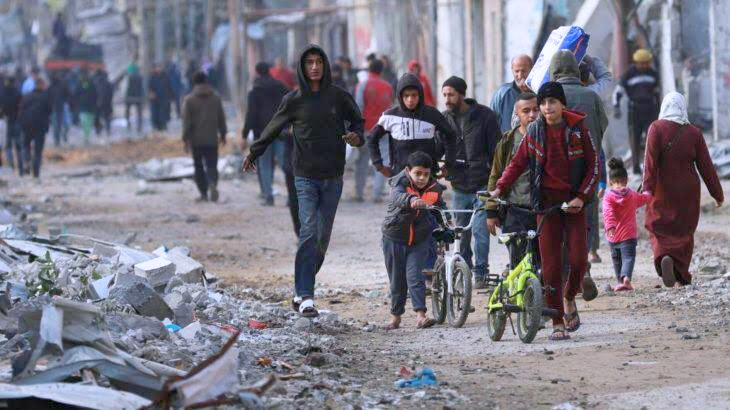
Latin America’s Economic Inequality: Challenges and Policy Responses
Introduction
Latin America has long been synonymous with stark economic inequality, a challenge that undermines the region’s potential for sustainable development and social stability. Despite significant economic reforms over recent decades, the gap between the rich and the poor remains one of the widest in the world. Of the 40 high-inequality countries identified by the World Bank (2024), 18 are in Latin America, making up 45% of the list. The region’s Gini coefficient, a measure of income inequality ranging from 0 to 1, with 0 suggesting perfect equality, stands at 0.46 (CEPALSTAT, 2024). This compares to the EU’s (2023) 0.29 and the World Bank’s (2024) world average of 38.2. To further contextualize Latin America’s income inequality, one-third of the region’s population is living in poverty. This disconnect between economic growth and equitable wealth distribution highlights a troubling reality: while Latin America’s economies have achieved impressive strides in attracting investment and stabilizing inflation, social progress has lagged far behind.
This article explores the persistent economic disparities in Latin America, focusing on Brazil and Mexico as case studies. It examines the root causes of inequality, evaluates the effectiveness of social programs and fiscal policies, and identifies gaps in current approaches. Further, this piece seeks to provide actionable policy recommendations to address one of the region’s most pressing challenges. In doing so, it underscores the critical need for a holistic approach that balances economic efficiency with social equity, ensuring a more inclusive future for all. Broadly, social programs in the region, such as direct money transfers, mostly driven by political interests, have focused on short-term aims. Thus, they have failed to address the structural causes of inequality, resulting in its persistence in Latin America. However, we must ask what is driving inequality in Latin America.
Historical Roots of Inequality
Latin America’s persistent inequality is deeply rooted in its colonial history and the concentration of resources among elites. During the colonial period, vast tracts of land were granted to a small group of landowners, creating a legacy of inequitable land distribution that persists in many countries, including Brazil and Mexico. This historical pattern limited access to resources and opportunities for indigenous populations and marginalized communities, entrenching economic and social hierarchies. These trends persist even today, exacerbating historical inequalities in the region. Oxfam (2016) reported that one percent of “super farms” in Latin America now control more productive land than the other 99 percent. While there have been attempted land reforms, they have failed because of corruption, deregulation, and cronyism. In the case of Brazil, Navarro (2016) asserts that the seemingly invisible alliance between large landowners and politicians has blocked legislation and enforcement of land reforms over many decades. Empowering rural communities through equitable access to resources and infrastructure would be the first step in breaking this alliance. Such measures could help break the cycle of systemic exclusion and foster more inclusive economic growth in Brazil, and the region by large.
Structural and Educational Challenges
Structural challenges, particularly in education, are major contributors to Latin America’s enduring inequality. While access to primary education in the region is relatively high, significant gaps emerge in secondary and tertiary education, where enrollment rates lag far behind those of other areas like East Asia. Scant education has been a historic challenge in Mexico, with low retention rates meaning that out of every 100 students entering the first grade of primary school, only 68 of them would complete all nine years of basic education (Santibañez et al., 2005). The challenges remain today and are more pronounced in education beyond schooling, with only 21% of Mexicans holding a bachelor’s degree (OECD, 2023). The COVID-19 pandemic exacerbated challenges on the educational front, as nearly 170 million children in the region were deprived of in-person education between March 2020 and March 2022 (World Bank, 2024). Offsetting this loss with remote teaching in Latin America was a significant challenge compared to other regions due to the scarcity of personal devices, particularly in rural areas.
Furthermore, the wage gap between skilled and unskilled workers is one of the widest in the world, reflecting the lack of accessible pathways for acquiring higher-level skills. The region’s education systems often fail to equip students with the skills needed to thrive in an increasingly technology-driven labor market. Addressing these barriers requires targeted investments in improving the quality of public education, particularly at the secondary level. For instance, the region can learn from India’s midday meal scheme operating in marginalized areas, incentivizing attendance in schools by providing midday meals to students. Policies aimed at reducing dropout rates, coupled with vocational training programs, can help bridge these gaps and promote more equitable opportunities for economic advancement.
Labor Market Disparities
Labor market inequalities, exemplified by the wide wage gaps between skilled and unskilled workers, further deepen economic disparities in Latin America. The region’s labor markets are characterized by a high degree of informality, 51% of its population is employed in the informal sector (ILO, 2021). This is of concern since the informal sector is not subject to government oversight, labor laws, and best practices applicable to the formal sector of a nation’s economy. Rigid labor market laws discourage firms from hiring workers, pushing people towards the informal sector in search of employment. Moreover, the gap in the quality of life between skilled and unskilled workers has been steadily widening, raising concerns for labor markets across the region. In the case of Brazil, for instance, manual workers were disproportionately impacted by the pandemic-induced recession, and are yet to recover fully. The concerns are not limited to unskilled workers anymore, as even middle-skilled workers are facing job insecurity due to the proliferation of automation. Adamczyk et al. (2022) discovered that nearly 45% of jobs in Brazil are susceptible to being replaced by automation in the future. Upskilling the workforce is a key policy recommendation in this area, as high-skill roles generally complement automation, making them less vulnerable to being replaced. These policies must be complemented by labor market reform, catalyzing formal employment and ensuring social protection for the lowest sections of society still engaged in the informal economy.
Brazil’s Policy Responses
Brazil has implemented notable social programs to address poverty and inequality, with Bolsa Família (Family Allowance) being the most prominent. Launched in 2003, this conditional cash transfer program provides financial assistance to low-income families, contingent upon children’s school attendance and vaccination. Under the scheme, benefitting families are ensured with a minimum transfer of 600 Brazilian Real (USD 99.33). The program has achieved significant success, reaching 21.1 million families in March 2023 alone (Government of Brazil, 2023). The year also marked the highest-ever total transference under the program amounting to 14 million Brazilian Real (USD 2.3 million). However, Bolsa Família faces limitations in addressing structural inequality. While they provide crucial short-term relief, such programs do not tackle deeper systemic issues such as unequal access to quality education, healthcare, and formal employment. To maximize the impact of its social programs, Brazil needs to integrate them with broader structural reforms, including investments in education, job creation, and progressive taxation. Brazil can build a more inclusive and sustainable economy by coupling short-term poverty alleviation with long-term strategies to address inequality’s root causes.
Mexico’s Policy Responses
Mexico’s efforts to address inequality have centered on a combination of social programs and fiscal reforms, with mixed results. Prospera, a conditional cash transfer program akin to Brazil’s Bolsa Família, aimed to reduce poverty by providing financial aid to low-income families in exchange for school attendance and preventive healthcare visits. While the program significantly improved education and health outcomes, particularly in rural areas, its effectiveness has been undermined by corruption and implementation challenges, leaving many of the poorest families without adequate support. Ulrichs and Roelen (2012) note that limited outreach to Mexico’s remotely located indigenous communities is one of the program’s most significant challenges. Further, it fails to address the underlying causes of inequality in the country, relying instead on encouraging the use of existing institutions in Mexico. Hence, the program could be tailored to address the vulnerabilities of particular sections of society and be complemented by structural investment in improving healthcare and education facilities in the country to amplify its effect.
On the fiscal front, recent reforms have focused on increasing revenue from wealthier segments of the population through progressive tax measures. However, Mexico’s tax-to-GDP ratio was 17.7% in 2023, well below the OECD average of 33.9%. It ranked last in the OECD’s tax-to-GDP ratio survey of its 38 member states (OECD, 2024). Low tax revenues limit the government’s capacity to fund large-scale social initiatives such as Prospera. Additionally, the high levels of informality in the labor market prevent many from benefiting from social protections and public services. Mexico needs to enhance its governance frameworks and reevaluate its revenue stream to ensure better program delivery and overcome existing challenges.
Conclusion
Addressing inequality in Latin America requires a comprehensive and multifaceted approach that goes beyond short-term poverty alleviation. As highlighted in the cases of Brazil and Mexico, conditional cash transfer programs like Bolsa Família and Prospera have achieved notable successes in reducing extreme poverty and improving access to education and healthcare. However, these programs alone cannot tackle the structural roots of inequality, such as inequitable land distribution, poor-quality education systems, informal labor markets, and inadequate tax collection. Long-term solutions demand investments in education and skill development, particularly among marginalized rural and indigenous communities, to catalyze social mobility. Labor market reforms must balance flexibility with protections to promote formal employment while reducing informality. Progressive tax reforms and improved fiscal governance are also crucial to generating the revenue necessary for equitable public spending on education, healthcare, and infrastructure. Tackling inequality in Latin America requires political will, innovative policymaking, and regional cooperation to ensure that economic growth translates into broad-based social progress. By addressing the systemic barriers that perpetuate inequality, Latin America can move toward a future where economic efficiency is balanced with social equity, promoting sustainable and inclusive development.
Ishan Jasuja is a Fellow at the Sixteenth Council.



